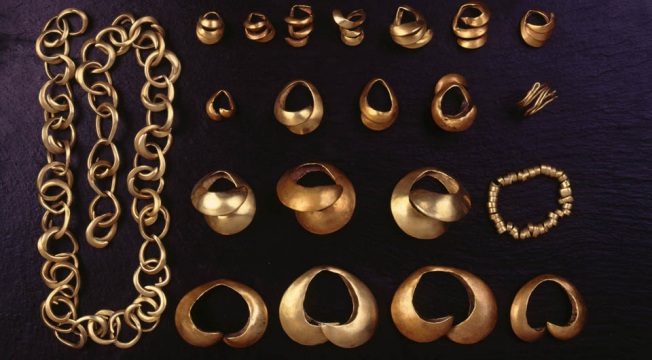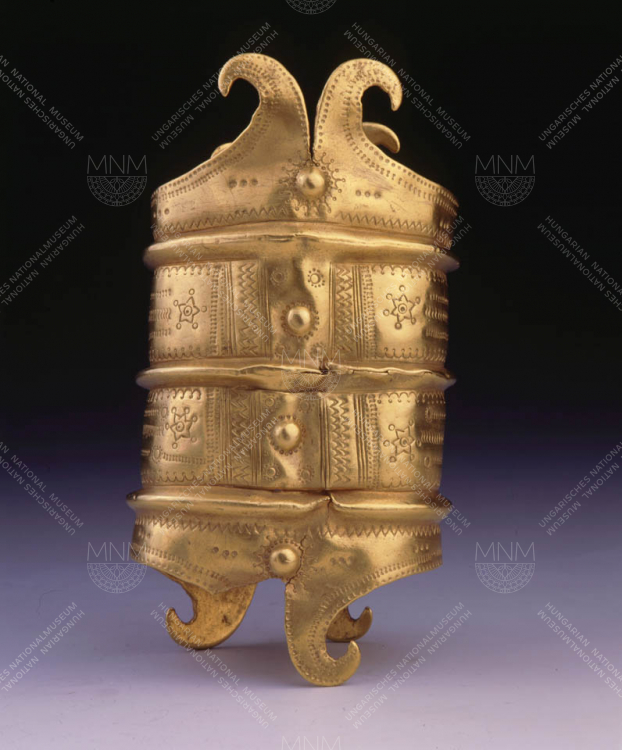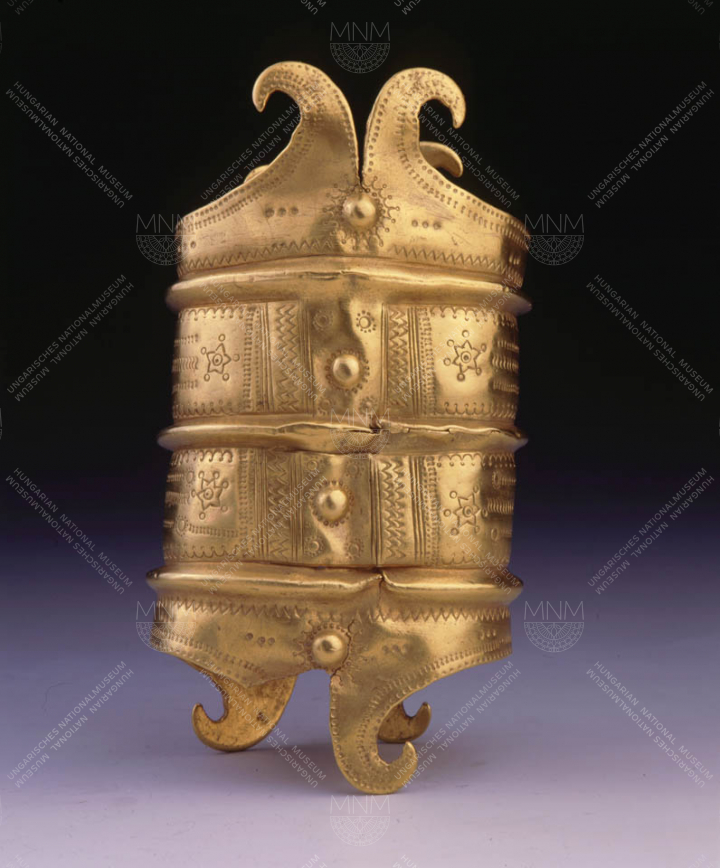
Room 4
Bronze and gold finds attest to metalworking art of a very rich and complex kind in the Carpathian Basin during the Bronze Age. Often consisting of many hundreds of bronze artefacts, hoards counting as the property of one or two persons, a family, or a community afford a sure basis for authentic reconstruction of the attire and the fighting habits of people in this period. Some of these hoards derive from settlements or cemeteries, while more of them have come to light as treasure trove or as finds in museum storerooms. The abundant gold finds fashioned on a high artistic level that are displayed here are very fine pieces from the heyday of goldsmiths’ work during the Bronze Age.
interesting facts:
The most important fittings in households during the Bronze Age were hearths. Numerous versions are known from excavations. The portable cauldron hearth combined with a vessel or gridiron counted as a new invention at this time. On account of its economical use of heat and its practicality, it was much favoured in households over a long period.
Bird-shaped vessels (askoi) from the Bronze Age may have been accessories used in religious rites and probably served the storing of a sacrificial drink.
Bronze had great value in this period. Artefacts damaged during casting or at other times were melted down and reused by masters. In a number of cases, fragments of earlier objects can be recognised in unworked castings. Special tools used in the working of bronze have also come to light during excavations.
Some Bronze Age treasure trove was not concealed by its owners because of attacks by enemies. Researchers believe that most of the pieces placed in the soil or in water may have been put there as sacrificial or votive offerings.











